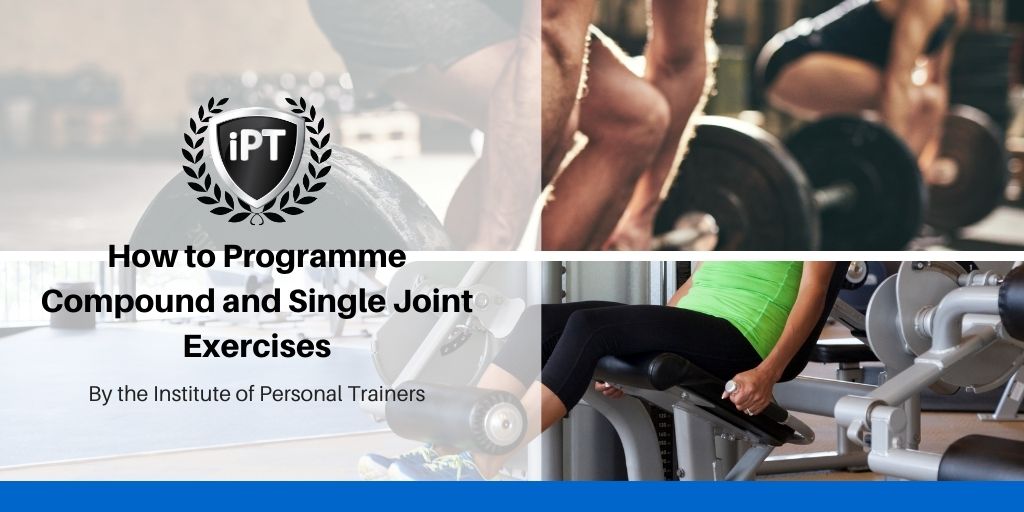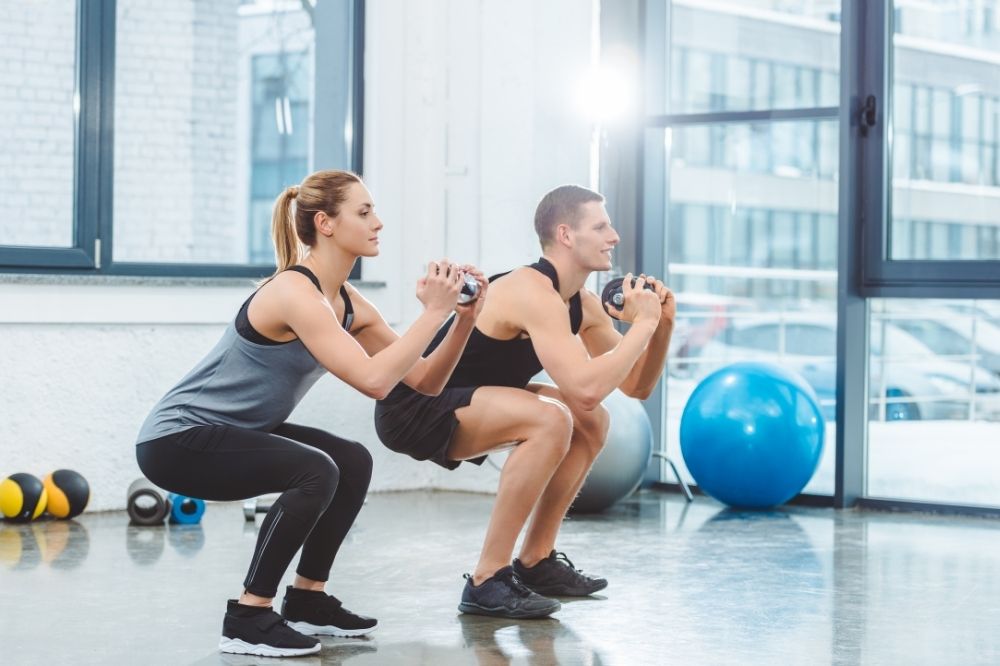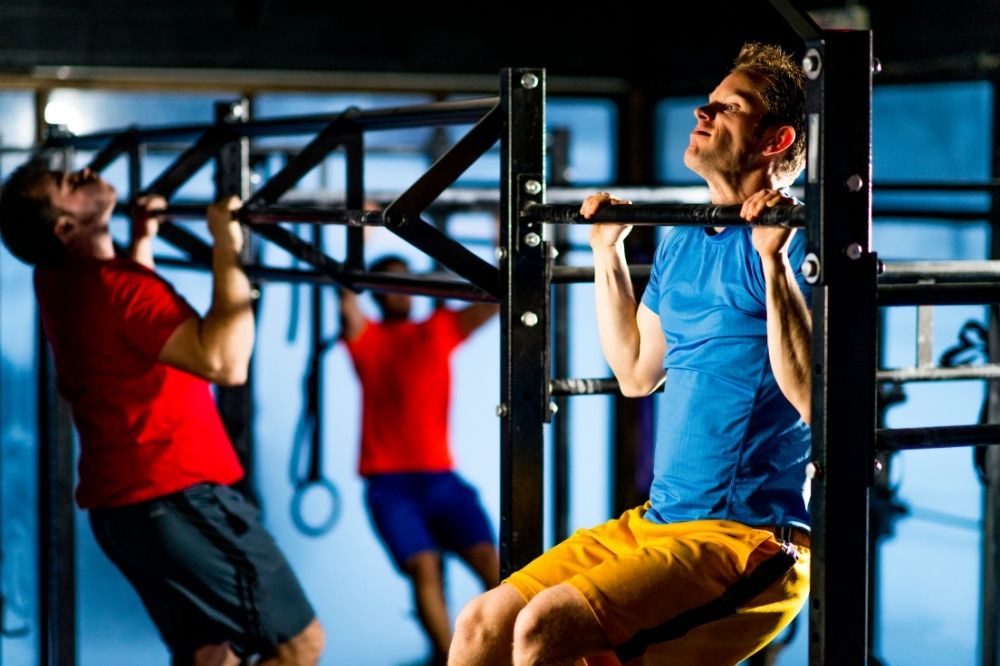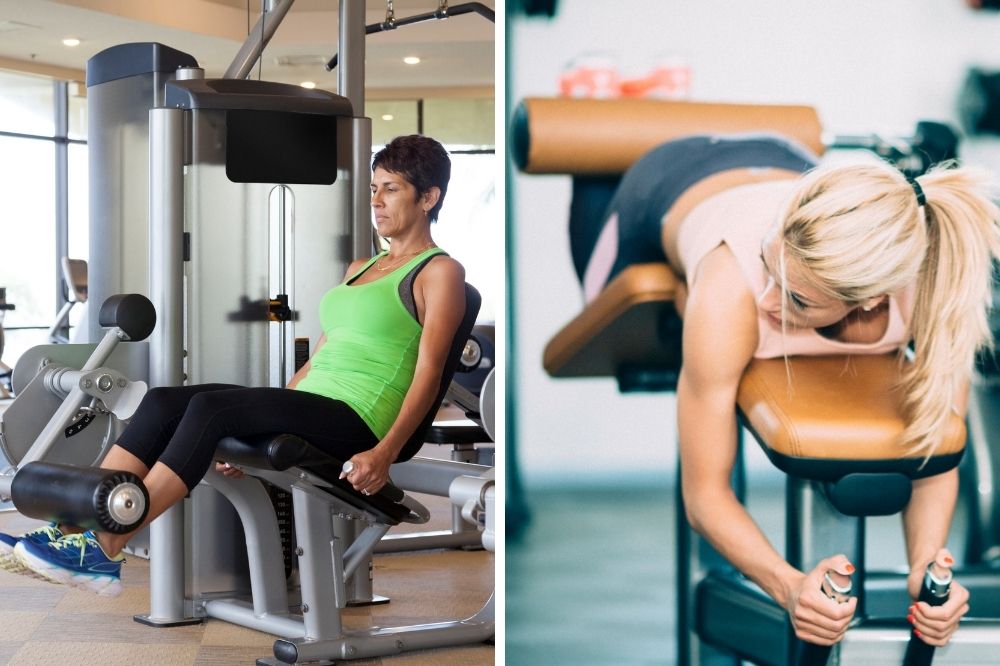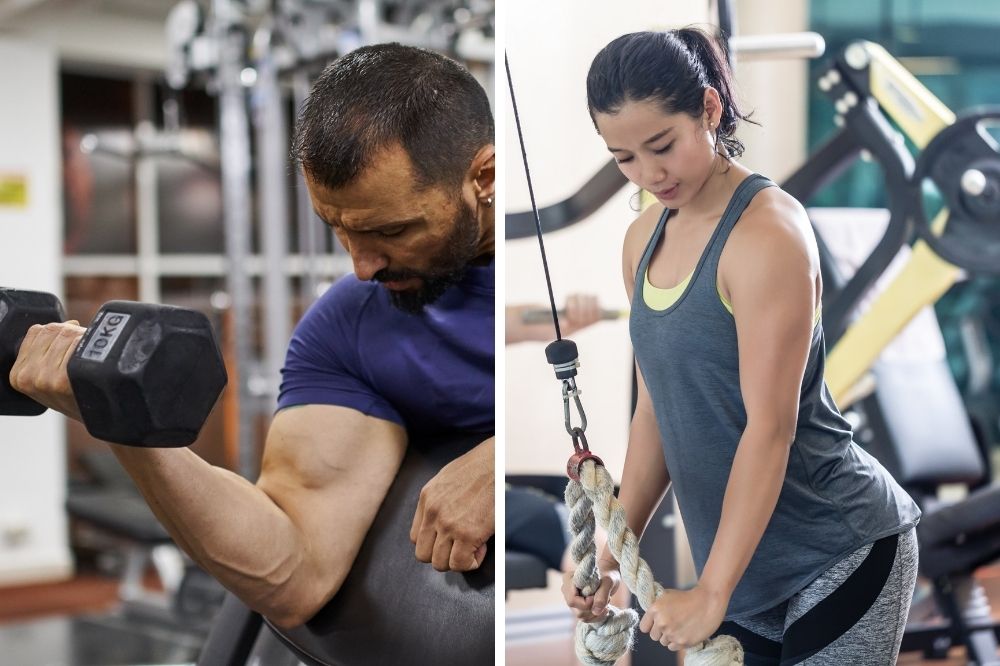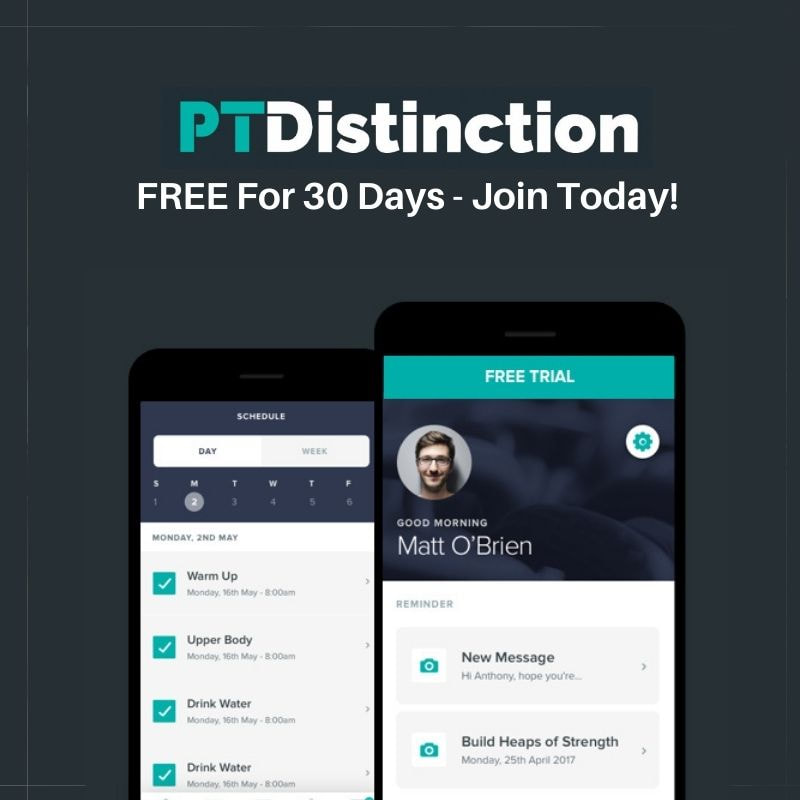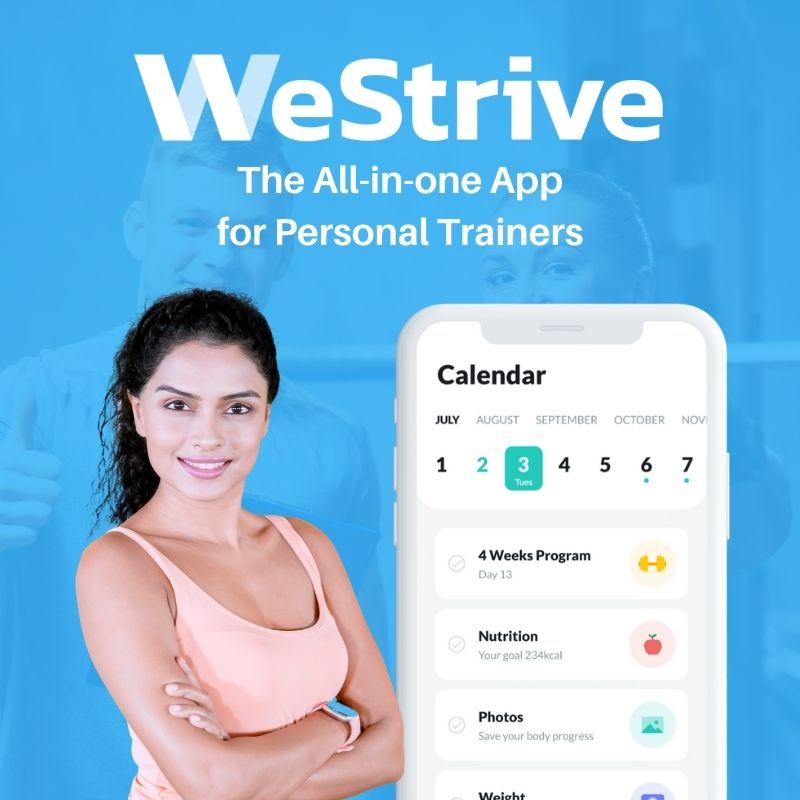|
FREE GUIDE: HOW TO LAUNCH AN ONLINE PERSONAL TRAINING BUSINESS
IN JUST 7 DAYS
✓ The new, better way of launching an online business
✓ The fastest way to create in irresistible offer ✓ A simple system to sell to clients who are interested |
|
All movements in the body happen at the joint where bones meet. For example, in the lower body the knees, the hips, and ankles. In the upper body, they include the shoulders, elbows and wrists. The movement is possible because the muscles pull the tendons which are attached to the bones. In programming, we classify movements as either single-joint movements or compound movements which use more than one joint. Since the role of the muscle is to move the joint, compound movements work more muscles at the same time than single-joint exercises and use more energy. Examples Of Compound Exercises These exercises are whole body movements, which make them a great option if you’re programming a whole body session for a client who can’t spend time in the gym working on individual muscles per week. Compound movements are complex and you might want to encourage the client to warm up with a similar movement pattern using only bodyweight before progressing them into using external loading. Squat Squats mimic the real world movement of sitting. It starts by bending the knee, and dropping the hips so that the angle behind the knee is closed. Because of this focus at the knee, it’s considered a knee dominant movement but there’s movement at the ankles and hips too. Deadlift The deadlift is a hip dominant movement that starts by pushing the hips back to create a “hinge” while your client picks up a weight from the floor. It’s arguably the most complete compound lift, as it works just about everything from the neck to the toes! If you only had time to complete one movement at the gym, a deadlift would be a great choice. Pull-up The pull up is a vertical pulling movement that works the muscles in the back and the shoulder joints. This is a goal for lots of clients, and it can feel like a huge milestone to achieve. For the client that hasn’t yet got a full bodyweight pull up, some gyms have assisted pull up machines, where the client can stand or kneel on a platform which offsets some of their bodyweight. Not all gyms have this though. The frequently recommended banded pull up is great to help the client lower their bodyweight slowly to perform a negative pull up, but doesn’t actually help the client who can’t already hold their bodyweight. A good alternative is a lat pulldown if your gym has a cable machine. Alternatively, you could seat your client on a small box below a racked barbell. The barbell should be racked at a height so that when the client lifts their arms straight up, the bar is in line with their wrists. The client can then keep their feet on the floor and provide themselves with some level of support while they develop that vertical pull. Bent Over RowThe bent over row is a horizontal pulling movement starts similarly to a deadlift, with a barbell or dumbbells on the floor. With the client adopting a hinged position, keeping their chest parallel to the floor as though they were performing a “good morning”, the client pulls the barbell into their sternum. The lift works the joints in the hips, shoulders, and elbows - as well as loading all the muscles in the posterior chain. This is a challenging move that requires excellent core bracing. If your client cannot manage this yet with a free weight, you could help them learn which parts of their body should move and which should not using a seated row if your gym has cable machines. Push-up The push up is a horizontal pushing movement that starts with your client in the plank position and involves lowering themselves to the floor and pushing back up. This mimics the movement of a barbell bench press, and works the joints at the shoulder, elbows and wrists as well as needing a tight core for stability. Risk of injury from compound movements comes from their complexity. Since more muscles and joints are working at the same time, they take considerably more skill, and core stability to complete safely. Examples of Single Joint Exercises Single joint movements will isolate the joint and are very carefully controlled isolation movements. Single joint movements are useful, particularly later in the workout when the client has already completed their compound lifts. Knee Joint The leg extension and leg curl machines isolate the knee joint. The extension works the muscles on the front of the thigh (quads) and the leg curl works the muscles on the back of the thigh (hamstrings), but both isolate the knee joint itself. Elbow You can isolate the elbow joint by performing a bicep curl to pull the weight towards the face, or a tricep extension to push the weight away. While there are a variety of attachments, weights or even angles to use to hit the muscles differently, they all isolate the elbow. Risk of injury from single joint movements comes from the muscles themselves being smaller. It’s easy to risk a tear if you try to use weights that are too heavy or inappropriate for the client. Start light, and focus on developing a connection to the movement before progressing your client. How to Programme Compound Movements Programming a compound movement is advisable earlier in the workout. Compound movements use more than one joint and multiple muscle groups. It takes more focus to perform these movements because they are more skilled. They often require bracing your core, stabilising free weights, and contracting multiple muscles at once. Compound movements are significantly more difficult to perform and involve more neuromuscular skill to develop. Programming these movements while your client is still relatively fresh, and before they’ve become fatigued by their session is advisable. Here are three ways they will help your clients. #1. Get the most work done. If they only had time to do one thing you programmed for them during that session, one well performed compound movement would be a better way to spend limited time in the gym than single-joint movements. #2. Perform more volume. The number of sets and reps could be fairly similar, but because a compound movement will allow them to lift more weight per rep, the total volume will be much higher than a workout consisting of single-joint movements. #3. Perform more highly skilled movements. The level of skill required to co-ordinate, balance, and perform a compound movement is far higher than single-joint movements. When programming for newer clients, you would check they could perform the movement using bodyweight only in a safe and controlled way before introducing weights. Planning compound movements first also reduces the risk of injury because the clients are not “pre-fatigued”. Compound exercises mimic many of the movement patterns of how your clients move around in their normal daily life, using familiar movement patterns and more muscles at the same time. Focusing on full body exercises means your clients are working their whole body in less time, it offers transferable strength and generally gets the heart rate up higher. How to Programme Single Joint Exercises You can program single joint movements later in the workout. Since the level of muscular recruitment and stabilisation is lower, it’s fine to use these movements when the client is somewhat fatigued. These movements are often done on machines and involve the focused contraction of muscles from just one joint - such as flexion at the knee to contract the muscles in the thigh for the leg extension. Single joint movements are often considered less skilled and so pre-fatiguing the muscles is safe. Here are some of the benefits of single-joint movements are. #1. Using them as accessory lifts. You can isolate a joint and the muscles around it, you can focus effort into fixing a muscle which isn’t as strong or well developed as others in a way that isolates it and forces it to work. This is essential for sports where the aesthetic is the main focus, such as bodybuilding. It’s also highly useful if the focus is strength and there’s a muscular imbalance you’re trying to address in a client’s programming. #2. It’s safe to work to failure. With the majority of the single joint movements being performed on machines, it’s very safe. The chances of a client hurting themselves are very small. That means you’re able to work at a higher level of reps and sets and incorporate assisted sets or failure sets where appropriate. #3. It can be easier to programme unilateral movements. When there’s an imbalance, using a single joint movement to work unilaterally on one side of the body can sometimes be appropriate, especially if the client is injured. #4.Time under tension can be increased. This is especially important in movements with tension throughout a range of motion. By using machines, and cables, the tension in the muscle can be sustained at all points of the movement and that can promote growth. Conclusion While some people say that compound exercises are preferable when the goal is strength, and the client may be short on time in the gym. They certainly give more “bang for your buck”. When it comes to single-joint movements, you can programme these more intentionally to fix imbalances and to promote hypertrophy. That said, research suggests both have their place. The decision for the personal trainer planning the programme should be based on the individual client.
Considerations are likely to include the availability of specific exercise equipment. The specific movements required and how they need to translate into everyday life for the client should be considered as well, for example, the needs of a bodybuilder are going to be significantly different to that of a rugby player. As always, the individual preferences of the client should be taken into account, including their training history, experience level and the amount of time they’re able to commit to their training on a weekly basis. Ultimately, there is space in any training programme to include both compound and single joint movements. When programming them together, simply include compounds at the start of the session when the client is fresh, and keep the single joint movements for later in the workout as accessory work. |
Our All In One Platform
Check out out all in one business & marketing platform for personal trainers!
WEBSITE BUILDER | FUNNELS |MEMBERSHIPS | SCHEDULING| EMAIL MARKETING| PAYMENTS| CRM | AI ASSISTANT | SURVEYS
Popular Articles
Trusted Partners
We work closely with some of the best service providers in the fitness industry.
Categories
All
|


